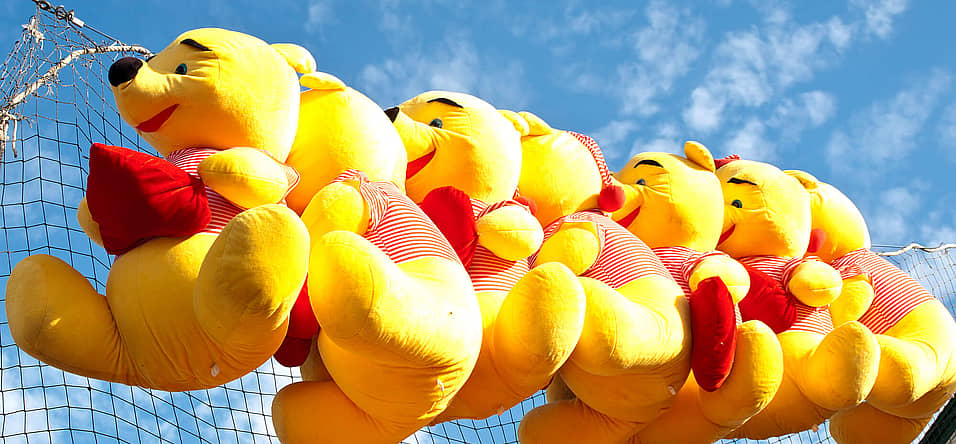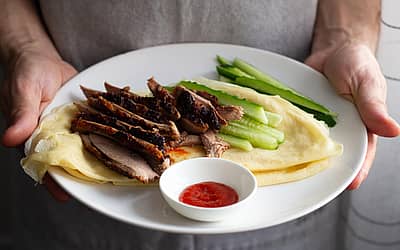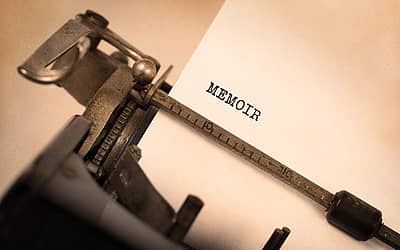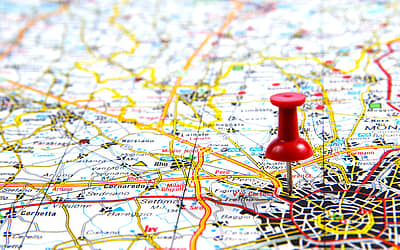
National Winnie the Pooh Day
Grab a pot of “hunny”, enjoy a game of Poohsticks and revisit these beloved childhood stories about a bear and all his friends.
One of the cuddliest holidays around has to be National Winnie the Pooh Day, celebrated on the birthday of author A. A. Milne. It’s one special anniversary fans just can’t bear to miss! Every year, the occasion is marked with events such as teddy bears’ picnics, featuring plenty of honey on the menu.
History Of Winnie The Pooh Day
Winnie the Pooh first appeared on the printed page in 1926, together with friends Piglet, Tigger, and Eeyore. All of them were based on toys owned by the author’s son, who also featured in the famous stories as Christopher Robin. The character later starred in a series of much-loved Disney films.
The name Winnie, for instance, came from Milne’s teddy bear Winnie. The “Pooh” part was from the nickname of a swan he’d met on holiday. The rest of the names, besides those mentioned above, were purely creations of his mind and allegedly did not refer to any objects in the real world.
The story and adventures of Winnie the Pooh are set in the ancient Ashdown Forest of East Sussex. The area features beautiful open heathland, wooded areas, and high ridges. Locals consider it an area of outstanding natural beauty.
Many stories in Winnie the Pooh have clear associations with locations in the forest. The illustrations that accompanied the original books often depicted scenes from this part of the world. Pooh, Tigger, and the crew are regularly seen marching through beautiful gorse, heather, bracken, and silver birch, all popular in the Ashdown area.
The landscapes were an essential part of what helped to make Winnie the Pooh such a compelling pop phenomenon. Like J.R.R Tolkien, Milne had found something unique and persuasive in the English countryside. There was deep magic about it that lent itself to pure escapism. The idea of friendly animal characters adventuring in such an area whisked audiences off to another world that had nothing to do with the pressures of the modern economy.
The first-ever Pooh stories appeared in a Christmas special edition of the Evening Standard newspaper in December 1924. The first book Winnie-the-Pooh emerged around a year later. It told the very first stories of Pooh and his compatriots as they humorously toured through idyllic country scenes, collecting honey and arguing pleasantly.
The Winnie the Pooh brand remained in the Milne family until 1930 until television and merchandising expert, Stephen Slesinger, bought out the rights. Milne received a $1,000 payment upfront plus 66 percent of the income generated by Slesinger’s efforts. Over the next thirty years, Winnie-the-Pooh transformed into a $50 million-a-year franchise – a testament to its tremendous popularity.
Pooh ceased being solely a storybook character. He soon grew into a film star, musician, and toy brand. No longer was the concept confined to the pages of a book. Winnie-the-Pooh had a very real presence in the world.
Throughout it all, though, Slesinger and the Milne family remained faithful to the original character of Winnie-the-Pooh. At first blush, everyone’s favorite yellow bear seems a little slow and dim-witted. But as the stories develop, you soon see endearing aspects of his character and profound emotional intelligence.
Pooh is keenly aware of his intellectual limitations, but this is an aspect that makes him so lovable. There’s no pretense about the bear. He just wants to live his life and find practical, hands-on solutions to problems. Examples of his down-to-Earth nature abound from his rescuing of Eeyore from a river to Poohsticks’ invention.
Pooh is also extremely fond of food and not afraid to indulge a little in life’s pleasures. He loves what he calls “hunny” and will go to great lengths to acquire it.
Most of the time, Pooh hangs out with his friends. He is a social creature, always interested in the lives of others. He makes a habit of spending time with the other animals of the forest and ensures that their needs are met. He is a kind of steward and a leader, without people realizing it.
When Disney bought the rights to the franchise in 1966, they were keen to keep Pooh’s lovable persona intact. Bosses at the studio knew that it was a winning formula and something people instinctively loved. Pooh hit the big time, thanks to animated productions from the cartoon maker.
The first production in 1966 was a theatrical “featurette” called Winnie the Pooh and the Honey Tree. Later, Disney followed up these productions with Winnie the Pooh and the Blustery Day and Winnie the Pooh and Tigger Too in 1974.
Seeing the demand for a feature-length film, the studio combined all three into The Many Adventures of Winnie the Pooh.
Things kicked off for the franchise after 1980. Producers gave the go-ahead for a series of new movies and television series that exposed entire generations of children to the concept. The first of these was Welcome to Pooh Corner, which ran from 1983 to 1986. After that came The New Adventures of Winnie the Pooh and My Friends Tigger & Pooh.
Ultimate, Milne intended Winnie the Pooh as a work that would comfort, not challenge. And that remains very much the essence of the franchise to this day.
How to Celebrate Winnie The Pooh Day
Thanks to the sheer number of films, books, and TV adaptations, there are all kinds of ways you can enjoy National Winnie the Pooh Day. In fact, there’s so much content to consume, there’s no way you’ll get it all done in twenty-four hours. Oh well, there’s always next year!
If you’re the sort of person who loves the history of Winnie the Pooh, why not spend the day reading Milne’s original works, starting with the Christmas edition of the 1924 Evening Standard? Then move on to reading the compilation stories to get a sense of how the author originally envisioned the character.
After that, it might be fun to move on to later adaptations of Pooh to see how he evolved over time. Often, you’ll find striking consistency, and sometimes you’ll find small cultural context changes here and there. Overall, though, it is incredible how similar the modern incarnation is to his historical counterpart.
Indulging in a Winnie the Pooh movie marathon can also be a lot of fun. You could watch all the films from the 1970s until the present, back to back.
Winnie the Pooh was also a massive lover of food, especially honey. Nothing is stopping you from recreating his favorite recipes from the books and movies.
Finally, one extra-special way to mark the day is to visit Pooh Corner in Hartfield, East Sussex, where the books were written. You can pick up a map to follow in the characters’ footsteps, and even play a game of Poohsticks on the original bridge.
Celebrating National Winnie the Pooh Day, therefore, is way easier than you might think. Dressing up as a bear, eating lots of honey, and watching your favorite Pooh movies are all great options.









